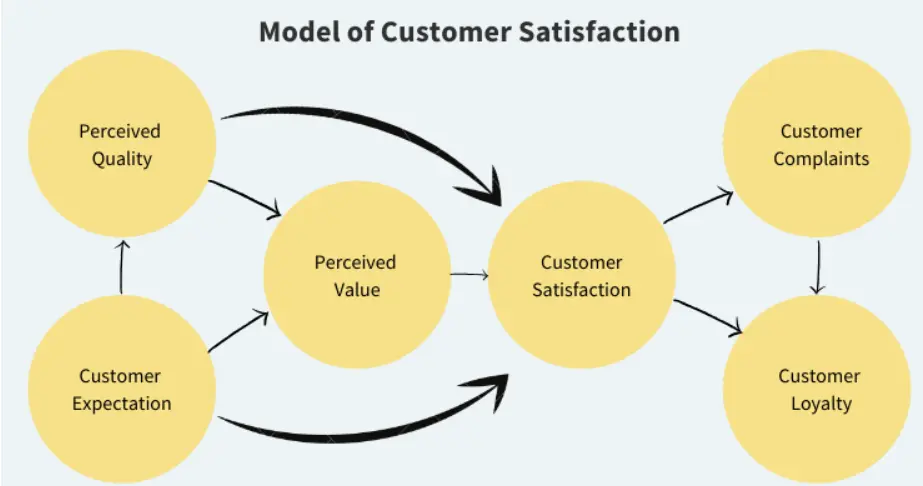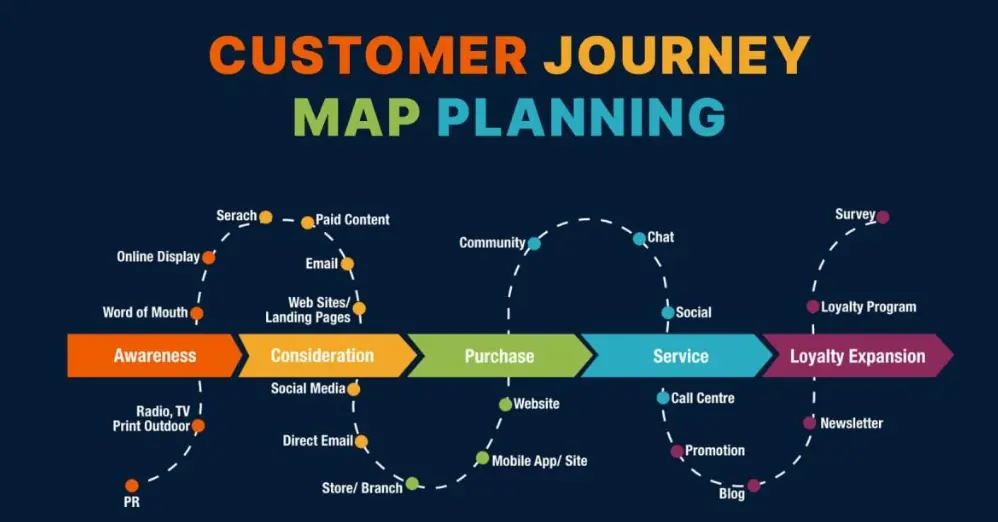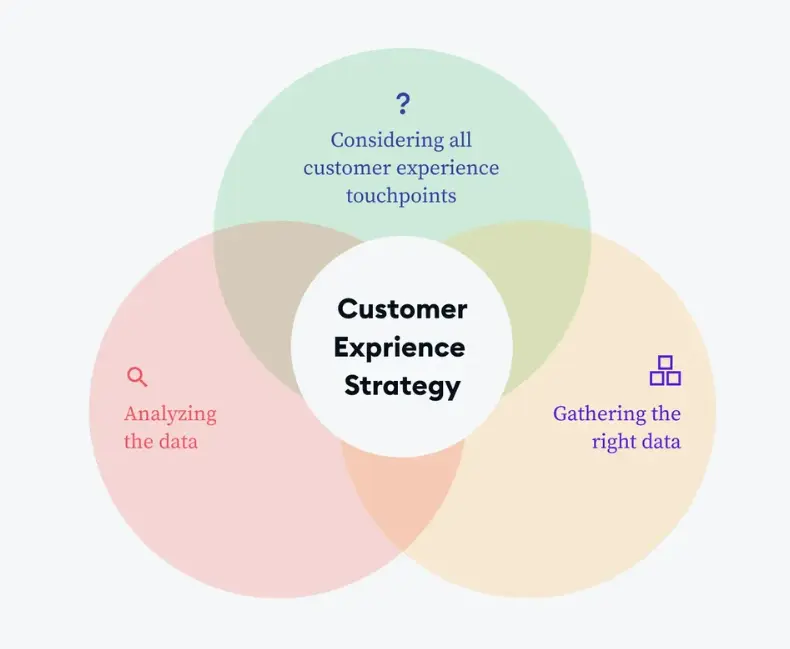Introduction
A Customer Experience Program is essential for businesses to thrive in today’s competitive market. It focuses on understanding and improving every interaction a customer has with a company. By creating positive experiences, businesses can foster loyalty, increase customer satisfaction, and drive growth.
Benefits of a Customer Experience Program
The benefits of the digital customer experience program is as follows:
Increased Customer Loyalty
The customer experience platform assists in increasing customer loyalty:
Personalized Interactions: When customers receive personalized service, they feel valued. Think of a barista remembering a regular customer's favorite coffee.
Consistent Quality: Consistency in service quality keeps customers coming back. A hotel chain maintaining high standards across all locations ensures repeat visits.
Rewards and Recognition: Loyalty programs reward returning customers. Supermarkets offering discounts to frequent shoppers boost loyalty.
Higher Customer Satisfaction
The customer experience management provides higher customer satisfaction:
Efficient Problem Resolution: Quickly addressing customer complaints leaves them satisfied. Telecom companies that promptly fix service issues retain happy customers.
Proactive Support: Offering help before customers ask enhances satisfaction. Online retailers providing instant chat support make shopping smoother.
Quality Products: High-quality products meet customer expectations. Durable and reliable electronics keep customers satisfied.

Positive Word-of-Mouth
The positive word-of-mouth given to a customer experience management is necessary as:
Sharing Positive Experiences: Satisfied customers share their experiences with friends. A diner enjoying a great meal tells others, driving new customers.
Social Media Praise: Happy customers post positive reviews online. A new phone with excellent features receives praise on social media.
Referrals: Customers recommend businesses they trust. A reliable plumber gets recommended to neighbors, increasing clientele.
Competitive Advantage
Having a customer experience platform provides a competitive advantage as:
Differentiation: A strong digital Customer Experience Program sets a business apart. Retail stores offering exceptional service stand out from competitors.
Brand Loyalty: Loyal customers choose familiar brands over new ones. Car manufacturers with trusted reputations retain their market share.
Customer Insights: Understanding customer needs helps businesses stay ahead. Tech companies using feedback to innovate maintain a competitive edge.
Steps to Create a Customer Experience Program
In this section, you’ll find the steps to create a digital customer experience program.
Step 1
Define Your CX Vision
Clear Goals: Establish what the digital Customer Experience Program aims to achieve. This vision guides all actions and decisions.
Alignment with Brand Values: Ensure the vision reflects the company’s values. It should resonate with both customers and employees.
Communication: Clearly communicate the vision to all team members. Everyone should understand and strive towards the same goals.
Step 2
Understand Your Customers
Customer Profiles: Create detailed profiles of your target audience. Knowing their preferences helps tailor experiences.
Behavior Analysis: Analyze customer behaviors and patterns. Retailers studying shopping habits can optimize store layouts.
Segmentation: Segment customers into different groups. Offering personalized deals to each segment enhances engagement.
Step 3
Customer Feedback
Surveys and Polls: Regularly gather feedback through surveys. Restaurants using feedback forms improve dining experiences.
Online Reviews: Monitor and respond to online reviews. Businesses addressing negative reviews show they care.
Direct Communication: Encourage customers to share their thoughts directly. Banks with feedback boxes receive valuable insights.

Step 4
Customer Journey Mapping
Touchpoints Identification: Identify all points of interaction with customers. This includes in-store visits, online shopping, and customer support.
Pain Points: Discover where customers face issues. Improving these areas enhances the overall experience.
Positive Moments: Highlight and replicate positive interactions. A friendly checkout process leaves a lasting impression.

Step 5
Develop a CX Strategy
Action Plan: Create a detailed plan to implement the digital Customer Experience Program. This includes specific actions and timelines.
Resource Allocation: Allocate necessary resources for implementation. Ensure sufficient budget, staff, and technology.
Continuous Improvement: Regularly update the strategy based on feedback and performance.

Step 6
Setting Goals
Measurable Targets: Set clear, measurable targets for the program. These could include customer satisfaction scores or retention rates.
Realistic Objectives: Ensure goals are achievable. Setting overly ambitious targets can lead to disappointment.
Regular Review: Continuously review and adjust goals. Adapt to changing customer needs and market conditions.
Step 7
Aligning with Business Objectives
Integration: Ensure the digital Customer Experience Program aligns with overall business goals. This creates a unified approach.
Cross-Department Collaboration: Encourage collaboration between departments. Marketing, sales, and support teams should work together.
Leadership Support: Gain support from leadership. A committed leadership drives the program’s success.
Step 8
Implement the Program
Pilot Testing: Test the program on a small scale before full implementation. This helps identify and resolve issues early.
Feedback Loop: Establish a feedback loop for continuous improvement. Regularly gather input from both customers and employees.
Full Rollout: Once tested, roll out the program across the entire organization. Ensure everyone is on board and trained.
Step 9
Training Employees
Comprehensive Training: Provide thorough training to all employees. They should understand and embody the program’s vision.
Ongoing Development: Offer continuous development opportunities. Regular workshops and training sessions keep skills sharp.
Empowerment: Empower employees to make decisions. Giving them autonomy improves their ability to serve customers.
Step 10
Integrating Technology
Customer Relationship Management (CRM): Use CRM systems to manage customer interactions. This helps track and analyze customer data.
Automation Tools: Implement automation tools for repetitive tasks. Chatbots can handle basic inquiries, freeing up staff for complex issues.
Analytics: Use data analytics to gain insights. Understanding customer behavior helps refine the digital Customer Experience Program.
Frequently Asked Questions (FAQs)
Why is a Customer Experience Program important?
Customer experience program enhances customer satisfaction, loyalty, and positive word-of-mouth, providing a competitive edge and driving business success.
How do you measure the success of a Customer Experience Program?
Success of customer experience program is measured through customer feedback, satisfaction scores, retention rates, and overall business growth metrics.
What are the key components of a Customer Experience Program?
Key components of the digital customer experience program include defining a CX vision, understanding customers, gathering feedback, mapping customer journeys, and developing a CX strategy.
How can technology support a Customer Experience Program?
Technology like CRM systems, automation tools, and analytics can streamline interactions, gather insights, and enhance customer service.
What are the benefits of implementing a digital Customer Experience Program?
Benefits of the digital customer experience program include increased customer loyalty, higher satisfaction, positive word-of-mouth, and a competitive advantage in the market
